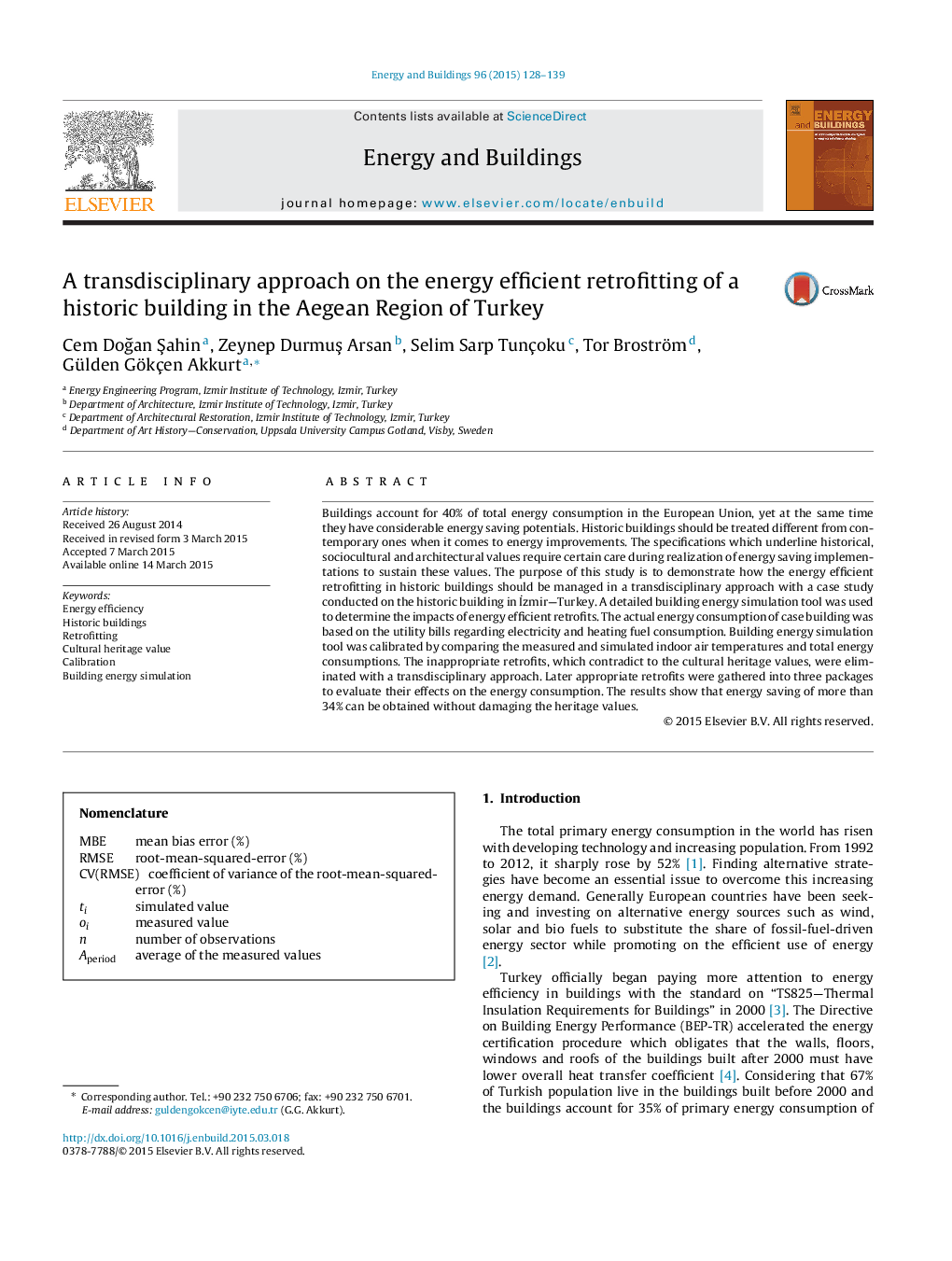| Article ID | Journal | Published Year | Pages | File Type |
|---|---|---|---|---|
| 6731453 | Energy and Buildings | 2015 | 12 Pages |
Abstract
Buildings account for 40% of total energy consumption in the European Union, yet at the same time they have considerable energy saving potentials. Historic buildings should be treated different from contemporary ones when it comes to energy improvements. The specifications which underline historical, sociocultural and architectural values require certain care during realization of energy saving implementations to sustain these values. The purpose of this study is to demonstrate how the energy efficient retrofitting in historic buildings should be managed in a transdisciplinary approach with a case study conducted on the historic building in Ä°zmir-Turkey. A detailed building energy simulation tool was used to determine the impacts of energy efficient retrofits. The actual energy consumption of case building was based on the utility bills regarding electricity and heating fuel consumption. Building energy simulation tool was calibrated by comparing the measured and simulated indoor air temperatures and total energy consumptions. The inappropriate retrofits, which contradict to the cultural heritage values, were eliminated with a transdisciplinary approach. Later appropriate retrofits were gathered into three packages to evaluate their effects on the energy consumption. The results show that energy saving of more than 34% can be obtained without damaging the heritage values.
Related Topics
Physical Sciences and Engineering
Energy
Renewable Energy, Sustainability and the Environment
Authors
Cem DoÄan Åahin, Zeynep DurmuÅ Arsan, Selim Sarp Tunçoku, Tor Broström, Gülden Gökçen Akkurt,
